Try this delicious triple blend of earth tones, flavors, and nutrition. Make matcha coffee at home. It's a simple, three-layered drink packed with plant-based antioxidants. I asked baristas in Tokyo the secret to making it. Find all their pro tips below!
Jump to Recipe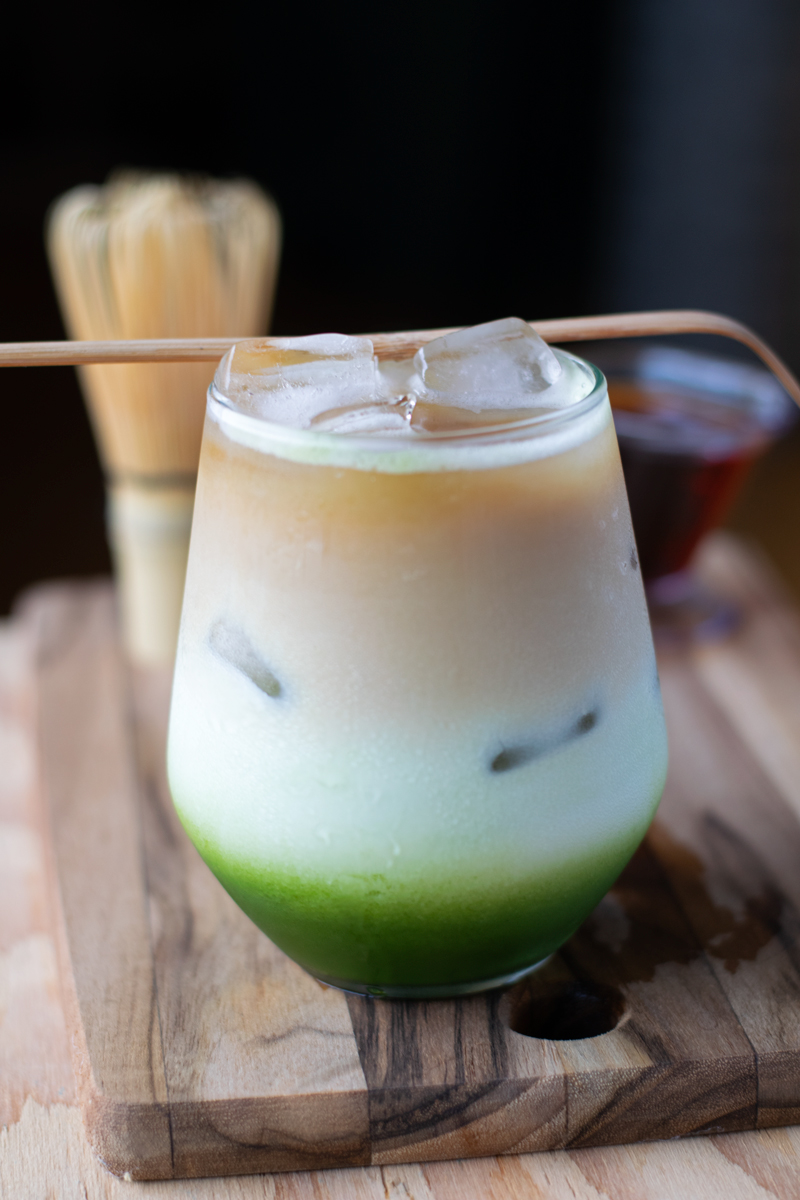
Full disclosure: I'm not a coffee drinker. Matcha, on the other hand, I can't live without.
I imagine you might be the other way around. You love your coffee. Maybe you're still matcha-curious or pretty green when it comes to whisking it at home. Am I right?
Or you love both and just had an epiphany, "I wonder if you can mix matcha with coffee?"
My goal with this recipe was to make it so surprisingly delicious that even a non-coffee drinker would love it. (That's me.) And two, I wanted to make it so tempting that a matcha virgin would not be able to resist trying it. Is that you?
I didn't know if it was actually possible.
Now I know it is.
And I know you're going to love this recipe.
Coffee and matcha together is beyond good. It's heaven.
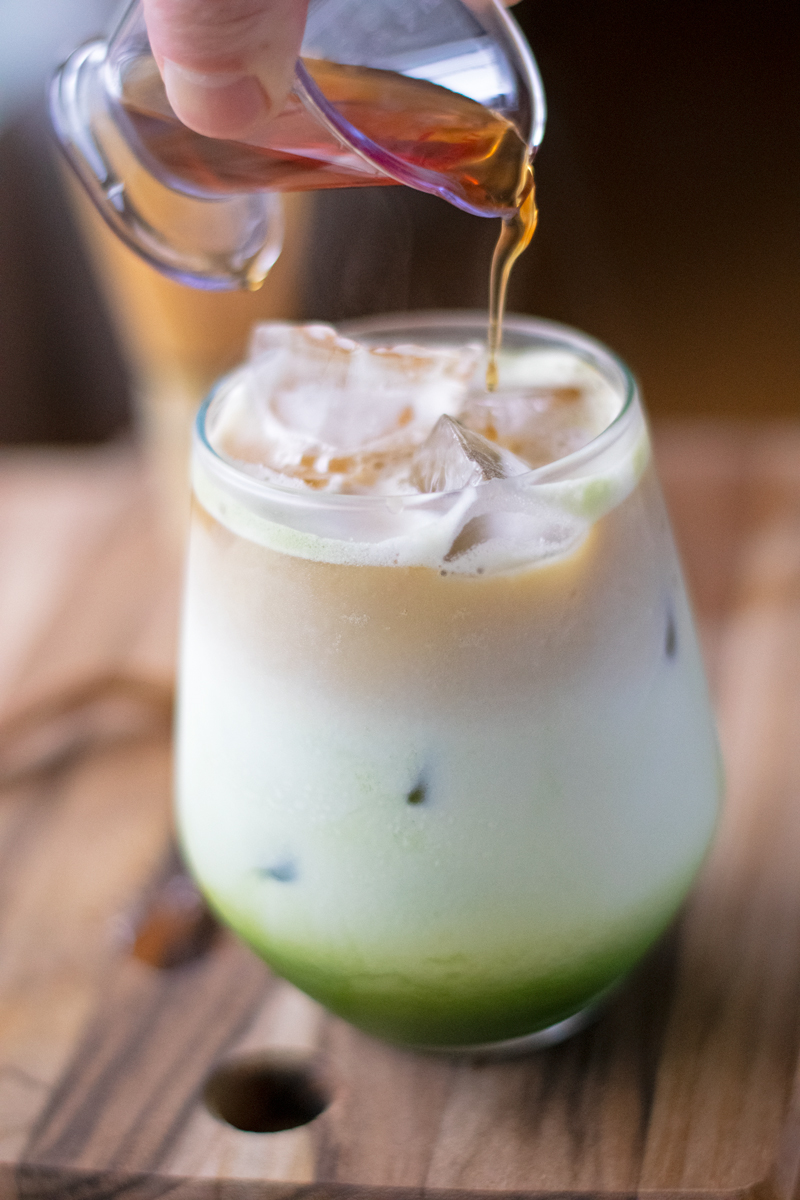
Can you mix matcha into coffee?
Yes! Who knew that powdered green tea leaves and coffee beans would turn out to be such a good match? No matcha pun intended.
You can even find this drink popping up at some local coffee shops in trendier cities like Tokyo, L.A., and soon to be in your innovative kitchen.
Visually and for your palette, it's better to make it as a layered drink. If you add matcha directly to black coffee or espresso, it can turn out to look like swamp water. You could add some tapioca bubbles to look like tadpole eggs. Or not.
This recipe is for the iced version of a matcha coffee, with milk or your favorite non-dairy milk.
If you'd prefer a more classic planted-based matcha latte, you can make these extra creamy matcha lattes with coconut milk.
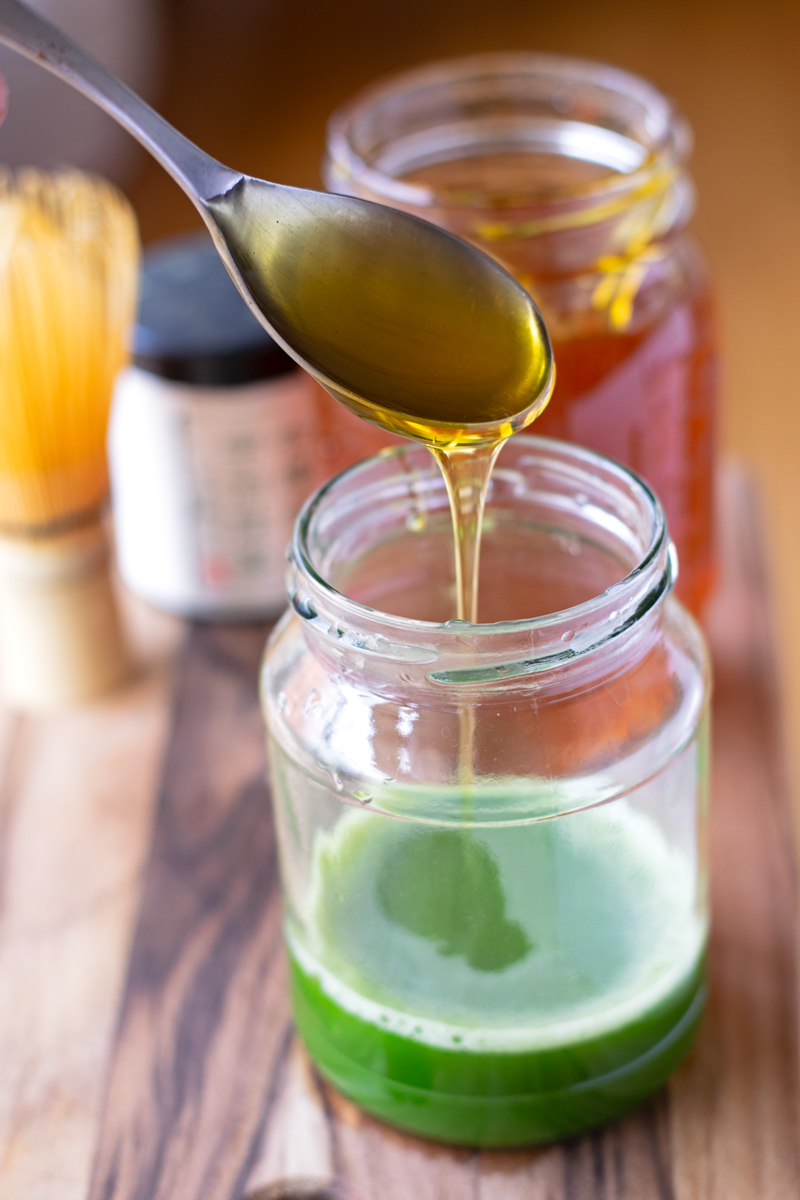
What is matcha coffee?
The fancy-looking drink is also known as matcha espresso, dirty matcha latte, or camo latte. It's a three-layered drink made with coffee, matcha, and milk. Typically, it's served unmixed with three distinct layers. Usually, the matcha layer is at the bottom.
I first discovered matcha coffee in Harajuku at The Matcha Tokyo and then at Trunk Hotel, closer to Shibuya.
From my research, I learned that Starbucks in Asia popularized the drink. Starbucks calls it their Matcha & Expresso Fusion. They combined their signature espresso roast coffee with matcha and milk. You can order it hot or cold.
At stores in the US, it looks like you may have to custom order a matcha espresso fusion. You're more likely to find it on the menu in countries like Indonesia, the Philippines, or Thailand.
But don't worry if you live outside the Asian market. I'm going to show you just how easy it is to make this drink at home. You can make yours taste better than Starbucks! Find the recipe below.
What does a matcha coffee taste like?
It's just like drinking a regular matcha latte with a subtle coffee aftertaste. At the start, all I taste is mild matcha with the creamy mouthfeel from the milk. It's the perfect balance of bitter and sweet. The honey and milk tone down any bitterness from the matcha. It's so smooth, mellow, luxurious, and comforting. And all the coffee adds is that extra final touch at the end. The coffee will linger on your tongue.
Again, I don't like coffee and I love the taste of this drink. I'll say it again– it's so good.
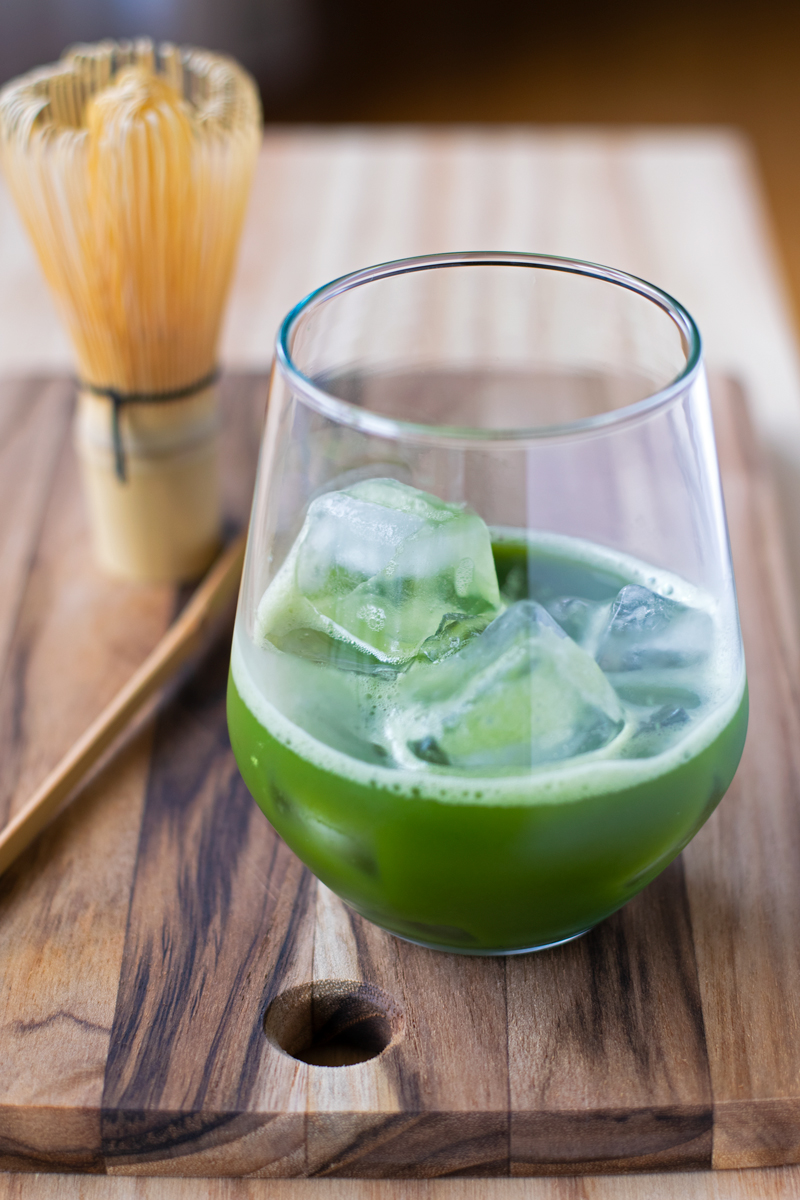
What's good about matcha coffee?
- Both coffee and matcha are high in antioxidants. People who only drink coffee tend to only get those healthy antioxidants from coffee. Now you'll get the health benefits of matcha on top!
- It's half the amount of coffee, which means less caffeine from coffee. And the caffeine in matcha doesn't cause the same jitters or caffeine crash. Your caffeine buzz will be more gentle and longer lasting.
- The L-theanine, one of the amino acids in matcha, can have a calming effect.
- Suits your diet: it can be made vegan, paleo, or keto-friendly.
- It's pretty! I would argue it's cooler looking than even three-layered strawberry or sakura lattes. The vibrant green color of matcha and the brown earth tones of coffee are a match.
- In theory, you'll have better breath. But you'll have to kiss me to confirm that matcha counteracts your coffee breath. 😉
- It's a simple recipe with only three ingredients. It's quick and easy to make.
- Iced matcha coffee is a delicious drink!
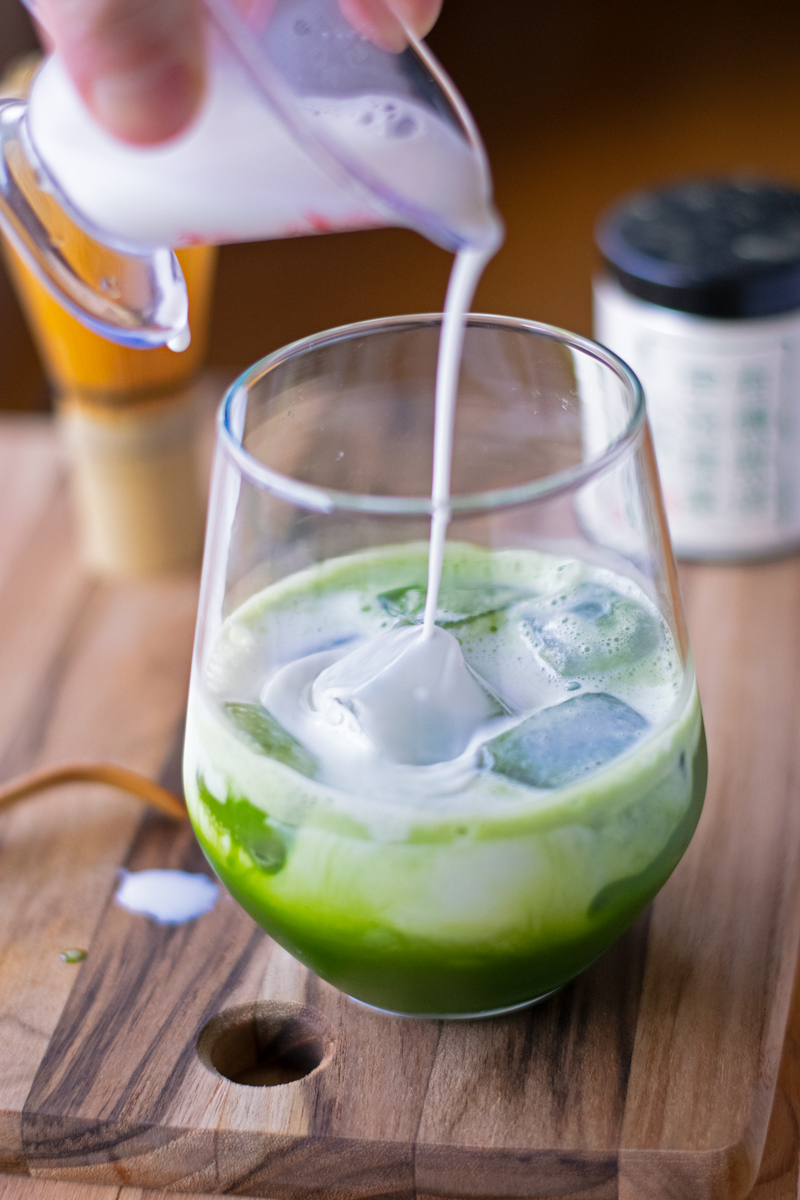
What is matcha coffee made of?
Ingredients and Substitutions:
- matcha green tea powder
- hot water
- whole milk (or alternatives: coconut milk, almond milk, or creamy oat milk)
- your favorite coffee (shot of espresso, French press, or even instant coffee)
- cup of ice cubes
- optional: honey, maple simple syrup, or your favorite natural sweetener
For best results, use good quality matcha powder for your bottom matcha layer. To learn more about how to choose the right matcha, read this post on ceremonial grade matcha vs culinary grade.
Good-tasting milk or non-dairy alternative also make a big difference.
Can I make matcha coffee without sweetener?
If you're going for the layered look, adding sweetener to your matcha is necessary.
You can definitely it make without sweetener. It will still taste amazing. You just won't be able to get three defined layers. The added density from a sweetener like honey or syrup is the secret to layered drinks.
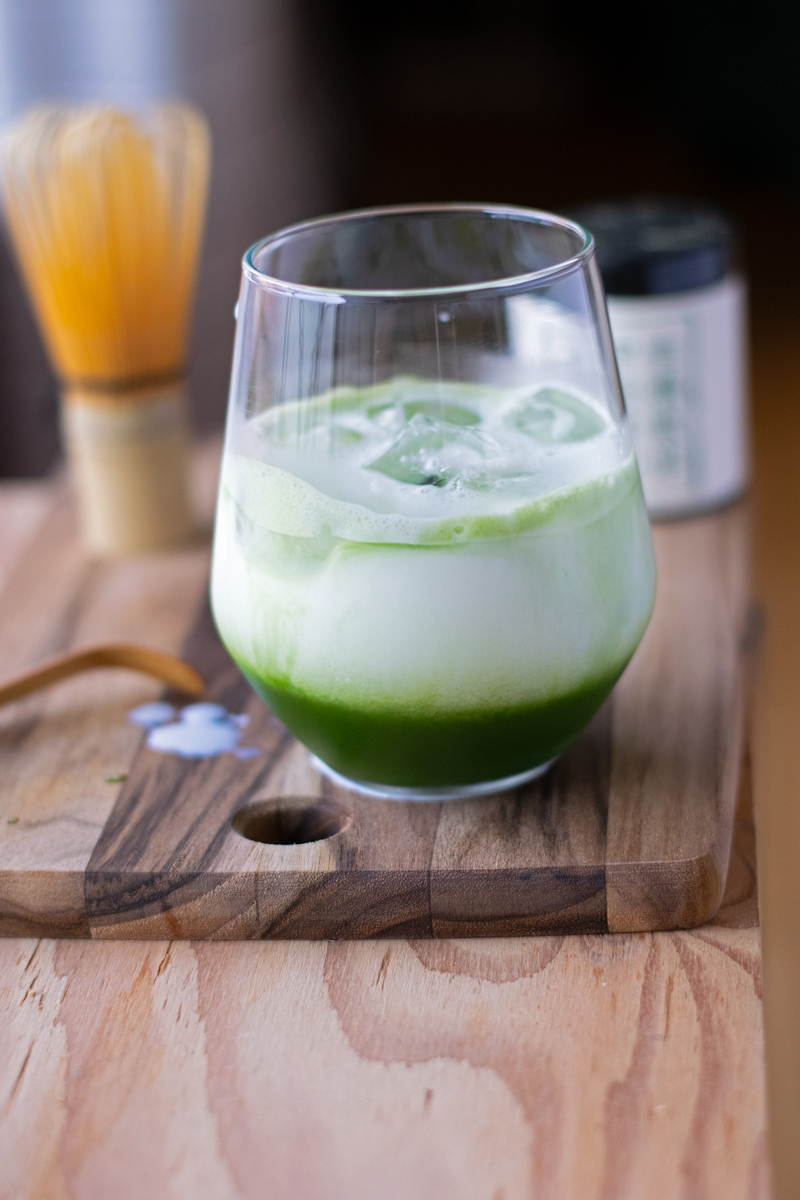
Tools to make matcha coffee
- matcha whisk (traditional bamboo whisk or milk frother)
- chawan bowl (or small bowl for whisking matcha)
- coffee machine (or espresso machine)
- glass jar with a screw-on lid
- tall glass, glass tumbler, or transparent latte mug
- ice-tray or ice-maker
- measuring spoon
- measuring cup (for liquids)
Don't own these tools? No problemo. The first three listed above are all optional. You can even mix your matcha in a small mason jar with a lid. Or even use a spoon. It doesn't need to be overly complicated. And you don't need to buy a bunch of expensive tools.
Tips for making this matcha coffee recipe
Follow these guidelines for the best results. The secret to this recipe is using quality ingredients, the right proportions, and the right technique.
You may have to remember some stuff you learned in your 9th-grade Physics class. Density or viscosity (the thickness of each liquid) matters. On top of that, you need to consider temperature, speed, force, and surface area.
- Adding a sweetener like honey to matcha makes it the "heaviest" (densest) layer at the bottom. You want the matcha to sink and the milk to float on top. This is the secret to getting the matcha and milk to form layers. This will achieve a separation, just like oil and vinegar.
- Measure the ratio of matcha to sweetener carefully. This ratio should help the layers form properly and get the right balance of sweetness and flavor.
- Let your matcha cool before adding the ice cubes. Otherwise, your ice cubes will melt too quickly. You can put matcha in the fridge to speed up the process. Even easier, mix your matcha powder with cooler water.
- Use a small measuring cup with a spout to pour the milk and coffee. You want the stream of liquid to be as thin and light as possible.
- Slowly and gently pour the milk directly on top of the ice cubes. Do the same with your coffee. This spreads out the stream of milk so it gently layers on top of the matcha.
- Add a little bit less milk if needed to make enough space for 50 - 70 ml of coffee at the top of your glass. Also, adjust to your taste preferences.
- A coffee with more of a sour taste matches well with matcha, I'm told. Though, I experimented with 3 different regular, classic coffee blends. They all paired well with matcha.
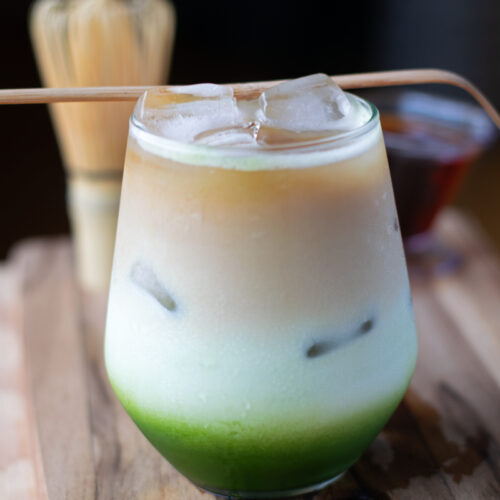
Matcha Coffee Recipe
Ingredients
- 1 teaspoon matcha
- ⅓ cup cold water approx. 80 ml
- 2 teaspoons honey
- ¾ cup milk or dairy-free alternative or slightly less
- ⅓ cup coffee 50 ml - 80 ml
- 1 tray ice cubes
Instructions
Matcha Layer
- Use a spoon to add matcha powder into a tea bowl.
- Add hot water on top of matcha powder.
- Whisk together until all clumps are gone and the top is frothy.
- Pour matcha into a jar.
- Use a spoon to add honey to the matcha.
- Put the lid on the jar and twist it to close tightly.
- Shake for about 15 seconds.
- Put the jar of sweetened matcha in the fridge to cool.
Coffee
- Steep your coffee.
- Set it aside. Let it cool down briefly while you prepare the layer of milk.
Making the 3 Layers
- Once cool, pour matcha into a glass or mug.
- Using your fingers or tongs, fill the layer of matcha with ice cubes until some of the ice cubes stick out of the top.
- As slowly as possible, gently pour the milk directly on top of the ice cubes that are sticking out of the matcha.
- Add more ice cubes into the layer of milk until some of the ice cubes stick out of the layer of milk.
- As slowly as possible, pour hot coffee directly on top of the ice cubes that are sticking out of the milk.
- Gently mix before drinking.
Notes
Why is it called a dirty matcha?
If a shot or double shot of espresso gets added on top of your chai latte, it's called a dirty chai. The dark brown color of espresso is the same color as dirt. So adding it, um, makes it look dirty. That's how understand it.
A dirty matcha is essentially the same drink as a dirty chai. Only the variety of tea is different: swap the chai for matcha.
Technically, the dirty in the name indicates that you're topping up the drink with espresso. If you are just using black coffee, like I did, it's not really a dirty matcha. Do you agree?
How much caffeine is in a matcha coffee?
I did the math.
The short, simple answer is about the same as one cup of coffee.
½ cup of coffee + ½ cup of matcha = one matcha coffee.
Matcha Espresso
Here is my longer, more detailed answer:
2 g of matcha (about 1 teaspoon) will contain between 37.8 - 88.8 milligrams of caffeine (source: PubMed Central).
Espresso typically has 63 mg of caffeine in 1 ounce (the amount in one shot), according to Department of Agriculture nutrition data.
Adding the matcha and espresso together, a matcha espresso will have approximately 100 - 150 milligrams of caffeine. That's kind of a lot of caffeine.
To compare: if you drink 8 ounces of your home-brewed coffee, you’re getting 96 to 128 mg of caffeine.
Matcha Coffee
One shot of coffee has about 17.7 mg according to the USDA, so I would double that if you use my recipe.
coffee (35.4 mg) + matcha (37.8 - 88.8 mg) = matcha coffee (73.2 mg - 124.2 mg)
These numbers are only a general guideline. There are more variables that affect the amount of caffeine in matcha and coffee.
To reduce the caffeine, you could consider using coffee instead of espresso or decaf coffee.
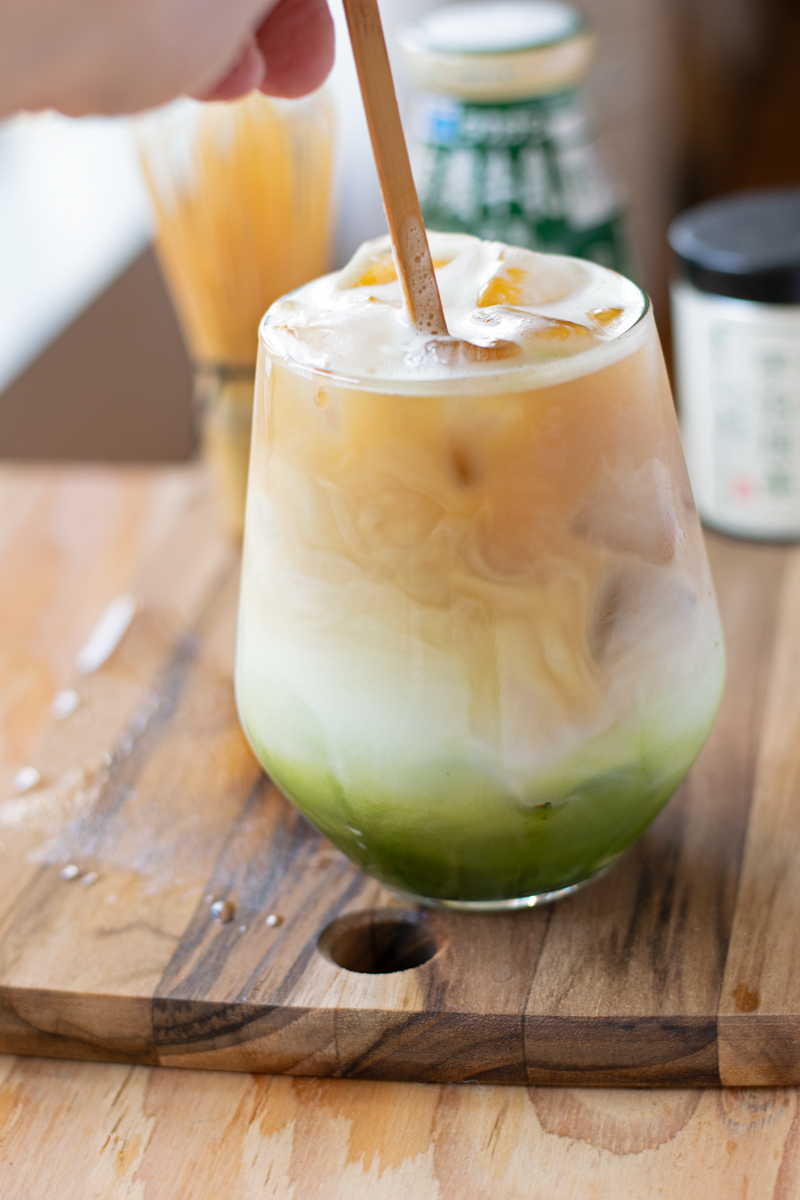
Try these other matcha drinks
Green tea shot (non-alcoholic)
Even more matcha
Matcha green tea - why it's so healthy


Leave a Reply